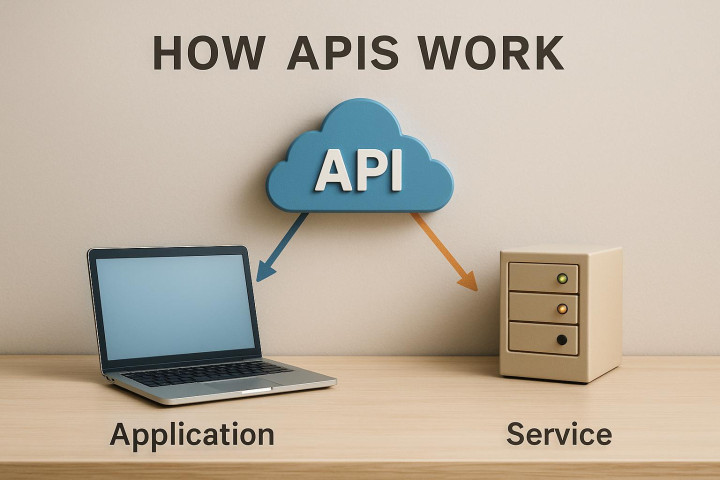The Hidden Cost of Poor System Integration
Why Poor Integration Between Systems Is Holding Your Business Back
And How APIs Can Change Everything
In today’s hyper-connected digital economy, businesses operate across an ever-growing array of applications, platforms, and tools. From customer relationship management (CRM) systems to enterprise resource planning (ERP), payroll software to marketing automation, data analytics platforms to e-commerce solutions—the average company may rely on dozens of independent systems to keep operations running.
But while these systems are highly capable on their own, many organisations suffer from a critical flaw: they don’t work together efficiently.
This lack of integration—where systems function in silos without sharing information or synchronising data—creates operational headaches, drains productivity, and stifles growth. It is one of the most common but underestimated challenges facing modern businesses today.
Let’s explore this issue in depth, including:
- What poor system integration actually means
- Why it's so common across industries
- The consequences for your business
- How APIs (Application Programming Interfaces) offer a practical, scalable solution
- Best practices for implementing API-led integration
- Real-world use cases from various sectors
- Common mistakes to avoid
DID YOU KNOW
Every time you check the weather, log in with Google/Facebook, or use GPS, you're making API calls. Most apps use 50–100 different APIs behind the scenes.
1. What Does “Poor Integration” Really Mean?
Poor integration refers to the failure of IT systems, platforms, or applications to communicate effectively, either due to technical limitations, outdated architecture, or a lack of interoperability planning.
Examples include:
- A CRM that doesn’t sync with your marketing platform
- A finance tool that doesn’t pull data from your sales platform
- An HR system that doesn’t connect with payroll or benefits management
- Customer data stored in multiple places, with different formats
- Repetitive tasks being performed manually due to lack of system connectivity
While the business world often champions digital transformation, it’s frequently done fragmentally—a tool here, a platform there—with little thought given to how these systems will interoperate.
2. Why Is Poor Integration So Widespread?
There are several reasons why system integration is often neglected or improperly executed:
a. Legacy Systems
Many organisations, particularly in industries like healthcare, banking, and manufacturing, still rely on legacy systems built decades ago. These were never designed to interface with cloud-based or modern applications, making integration incredibly challenging.
b. Departmental Procurement
Different departments often choose tools independently, without IT oversight or strategic alignment. This leads to a fragmented tech stack and minimal cross-compatibility.
c. Growth Without Planning
Fast-growing companies often implement new systems rapidly to meet immediate needs, without a long-term integration roadmap. Over time, this results in a tangled web of disconnected tools.
d. Lack of Technical Resources
Many small and medium-sized enterprises (SMEs) lack the in-house expertise to properly connect systems or build custom integrations.
3. What Are the Risks and Costs of Poor Integration?
The true cost of disconnected systems extends far beyond IT frustrations—it can severely impact performance, compliance, customer satisfaction, and profitability.
a. Inefficient Operations
Staff waste countless hours on repetitive tasks, such as exporting/importing spreadsheets, manually updating records, or verifying data accuracy across platforms. This slows down workflows, increases human error, and limits overall productivity.
b. Data Inaccuracy and Duplication
When systems don’t synchronise, data becomes fragmented. Different departments may work with conflicting versions of the same information—undermining reporting, forecasting, and decision-making.
c. Security and Compliance Risks
Siloed data can lead to gaps in visibility, weak access controls, and audit challenges. For industries subject to strict regulations (like GDPR or HIPAA), poor integration increases legal and financial risks.
d. Customer Experience Breakdown
Customers expect seamless, responsive service. If your support team lacks access to order history or communication records, or your marketing team sends irrelevant messages due to outdated data, customer trust can quickly erode.
e. Limited Scalability
When systems don’t integrate, adding new functionality or scaling up processes becomes more expensive and complex. Businesses end up hitting a “growth ceiling” much sooner than necessary.
4. The Role of Bespoke Software in System Integration
While off-the-shelf tools and public APIs offer a solid foundation for integration, they’re not always a perfect fit—especially for organisations with unique workflows, niche industry requirements, or complex legacy systems.
This is where Bespoke software developed API's comes into its own.

Custom-built applications can be designed to either:
a. Unify Multiple Systems into a Single Platform
Bespoke software can consolidate core business functions—such as CRM, finance, HR, inventory, customer service, and project management—into one cohesive interface. This eliminates the need to manage dozens of disconnected tools and creates a streamlined user experience.
Instead of staff jumping between six platforms and spreadsheets, everything lives in a centralised environment tailored to how your business operates.
b. Act as a Smart Connector Between Existing Tools
In some cases, it’s neither practical nor cost-effective to replace existing systems. Bespoke integration tools can serve as an intelligent middleware layer, bridging gaps between platforms that otherwise don’t natively integrate.
These custom connectors can:
- Pull and push data between APIs in a specific sequence
- Transform and clean data during transmission
- Trigger workflows based on custom business logic
- Provide dashboards for monitoring and reporting across systems
The flexibility of bespoke software means it can work around the limitations of third-party APIs, adapt to changing requirements, and ensure complete control over how data flows across your business.
5. When to Consider a Bespoke Approach:
- Your industry has regulatory or operational requirements not addressed by off-the-shelf tools
- Existing systems have no native integration or limited API capabilities
- You want a central “command centre” tailored precisely to your business model
- Off-the-shelf connectors don’t handle your complexity or scale
- You're managing legacy infrastructure alongside modern platforms
6. Enter APIs: The Digital Connectors
Application Programming Interfaces (APIs) are the unsung heroes of modern digital infrastructure. They are not apps or systems themselves, but rather rules and protocols that allow software applications to “talk” to each other.
Think of APIs as translators or messengers. They enable two applications to share data, perform tasks, or trigger actions—often in real time, and with minimal manual intervention.
7. APIs Can Be Used To:
- Sync customer data between a CRM and a marketing automation platform
- Automatically generate invoices in an accounting system after a sale is completed
- Update inventory levels across multiple sales channels
- Integrate a website’s contact form with a helpdesk ticketing system
- Send real-time alerts when specific business thresholds are crossed (e.g. low stock, failed payments)
DID YOU KNOW
Over 90% of Developers Use APIs Daily
Every time you check the weather, log in with Google/Facebook, or use GPS, you're making API calls. Most apps use 50–100 different APIs behind the scenes.
8. Benefits of API-Driven Integration
a. Real-Time Data Synchronisation
APIs ensure that changes made in one system are reflected immediately in others, ensuring a consistent and up-to-date single source of truth.
b. Process Automation
Tasks that once required human input can be fully automated—improving speed, accuracy, and operational efficiency.
c. Improved User Experience
Staff no longer need to toggle between systems or duplicate efforts. Customers benefit from faster, more personalised service.
d. Scalability and Flexibility
Need to add a new analytics platform or switch CRMs? With APIs in place, changes can be made quickly without having to rebuild entire workflows.
e. Reduced IT Burden
Modern APIs are designed to be modular and reusable, which means IT teams spend less time maintaining custom integrations and more time on innovation.
9. Industry Use Cases
Retail & E-commerce
- Integration between POS systems, inventory management, customer loyalty platforms, and marketing software ensures stock accuracy, smooth checkout, and personalised offers.
Financial Services
- APIs help connect front-end applications with secure back-end databases, fraud detection systems, and compliance tools to streamline onboarding and improve transaction transparency.
Healthcare
- Secure API connections between EHRs (Electronic Health Records), appointment systems, billing software, and diagnostic tools ensure timely care and accurate record-keeping.
Manufacturing
- APIs can connect ERP systems, supply chain platforms, production management tools, and warehouse software to create a single, responsive operations dashboard.
Education
- Student information systems, virtual learning platforms, attendance tracking, and parent communication tools can be integrated to deliver a consistent, personalised learning experience.
10. Best Practices for API-Led Integration
a. Adopt an API-First Mindset
When evaluating new tools, always ask: Does it offer robust API support?
b. Use a Central Integration Platform (iPaaS)
Tools like MuleSoft, Zapier, Boomi, or Make can simplify complex integrations without heavy coding.
c. Establish Data Standards
Ensure consistency in how data is formatted and labelled across systems. APIs work best when the data they handle is clean and structured.
d. Prioritise Security
Use authentication protocols like OAuth, and always encrypt sensitive data during transit.
e. Monitor and Document
Maintain clear documentation for your APIs and monitor usage to detect performance or security issues early.
11. Common Pitfalls to Avoid
- Building one-off, hardcoded integrations that are difficult to maintain
- Choosing systems with limited or proprietary API support
- Failing to plan for version updates or changes to third-party APIs
- Ignoring the need for internal API governance or lifecycle management
- Overlooking the training needed for teams to leverage integrated systems properly
Final Thought: Integration Is No Longer Optional
Poor system integration isn’t just a minor IT inconvenience—it’s a business risk. It affects productivity, customer loyalty, employee satisfaction, and your ability to compete in an increasingly digital world.
APIs provide the key to unlocking a truly connected enterprise. Whether you’re a start-up scaling operations or an established company undergoing digital transformation, investing in proper integration is one of the smartest, most future-proof decisions you can make.
Bespoke + APIs = Total Control
While APIs form the backbone of integration, bespoke software gives you the flexibility, customisation, and precision to make those APIs work exactly the way your organisation needs.
This hybrid approach—using APIs to connect systems and bespoke tools to orchestrate them—results in a unified, intelligent, and scalable digital ecosystem.
Contact us now and discuss how our Bespoke API's can get all your systems talking

Mailchimp Alternatives Guide 2025
Is Mailchimp still the best FOR EMAIL MARKETING? Or are UK businesses find...
5 min read

Admin Overload: The Silent Business Killer
The cost of manual, repetitive admin tasks In countless small and medium-s...
3 min read

eCommerce Trends 2025
The e-commerce landscape has been evolving at a rapid pace over the past fe...
5 min read

